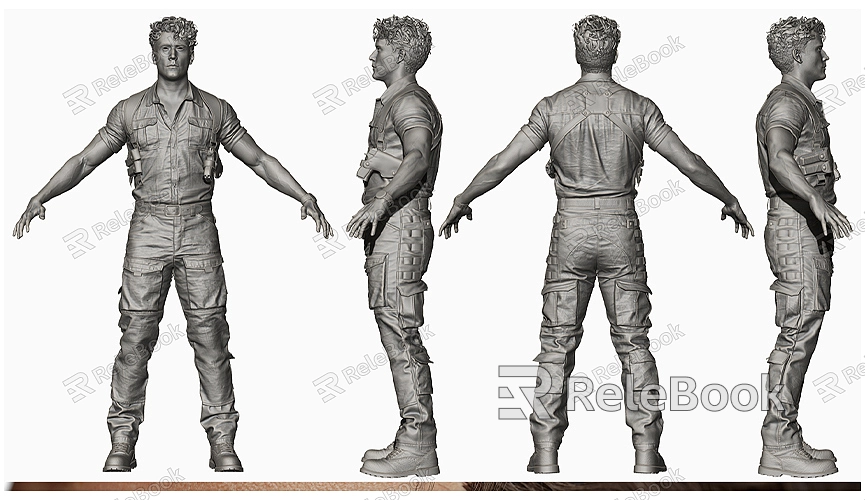How to Prepare SketchUp Models for 3D Printing
As 3D printing becomes increasingly popular, more designers and enthusiasts are turning to SketchUp to create their models. Proper preparation is crucial to ensure that your model can be printed successfully. This article will explore how to effectively prepare SketchUp models for 3D printing.
Understand the Basic Requirements of 3D Printing
First, it’s important to understand the basic requirements of 3D printing. Most 3D printers require models to be "closed," meaning that the surfaces of the model should not have any holes. Additionally, you need to consider the model’s size, scale, and the complexity of details, as these factors will affect the print quality and print time. Many printers use techniques like Fused Deposition Modeling (FDM) or Stereolithography (SLA), each with slightly different requirements for models.

Ensure Model Closure
Before starting your design, ensure that the model is a complete solid. Use SketchUp's "Solid Tools" to check for any holes in the model. After selecting your model, open the "Entity Info" panel to see if there are any open faces. If issues are found, fix them promptly to ensure all faces are closed. You can also switch to "Hidden Line" mode in the view to check for any potential openings.
Reduce Excessive Details
During the design process, try to avoid unnecessary details, as they can increase print time and may lead to printing failures. Simplify any unneeded details, such as tiny edges or complex textures, while maintaining the overall shape. Keeping the edges of the model clean can help minimize potential flaws during printing.
Adjust the Model's Scale
When designing in SketchUp, ensure that the model’s scale fits within the printing range of your printer. Different 3D printers have varying size limitations, so consider the printer's specifications while modeling. You can adjust the scale of your model in SketchUp at any time to ensure it fits within the printable area. If the model is too large, consider splitting it into multiple parts for printing.
Export in the Right File Format
Once your model is ready, the last step is to export it in a format suitable for 3D printing. Most 3D printers support the STL file format. Go to the "File" menu, select "Export," then choose "3D Model," and pick STL as the file format. During export, opt for high precision settings to ensure the model details are as perfect as possible for printing.
Perform Slicing
After importing your model into 3D printing software, slicing is a necessary step. The slicing software breaks the model down into layers for the printer to print one layer at a time. During slicing, you can select print parameters such as fill density and support structures. Setting these parameters correctly can enhance print quality and reduce material waste. For higher detail requirements, you might choose a finer layer height, but keep in mind that this may increase printing time.
Validate the Model
After slicing is complete, it's crucial to validate the model. Many slicing software packages offer a preview feature that allows you to view each layer of the model as it will print. If any issues are identified, return to SketchUp for adjustments. Ensuring that each layer can print smoothly is essential. Typically, slicing software includes error detection features that can automatically identify problems in the model and suggest solutions.
Use Suitable Materials
Choosing the right printing materials is also key to successful printing. Different materials have different requirements for printers; some may need special nozzles or temperature settings. Understand the properties of the materials you plan to use to ensure compatibility with your printer. For example, PLA is a common and easy-to-print material, while ABS requires higher temperatures and may need ventilation.
Post-Processing After Printing
Once 3D printing is complete, post-processing is usually necessary. Removing support structures, sanding surfaces, and painting can significantly improve the appearance and quality of the final product. Using appropriate tools and materials can make your printed piece look more polished. If your model has moving parts, ensure they can move freely after printing.
Preparing SketchUp models for 3D printing isn’t overly complicated, but it does require following specific steps. Ensuring your model is closed, reducing details, adjusting scale, exporting in the right file format, and performing slicing and validation are all essential. With proper preparation, you can successfully print your desired model.
Finally, if you need high-quality 3D textures and HDRI for your modeling and virtual scenes, you can download them for free from [Relebook](https://textures.relebook.com/). If you're looking for exquisite 3D models, check out [Relebook](https://3dmodels.relebook.com/) for a wealth of high-quality resources to assist you in your modeling and printing projects.

